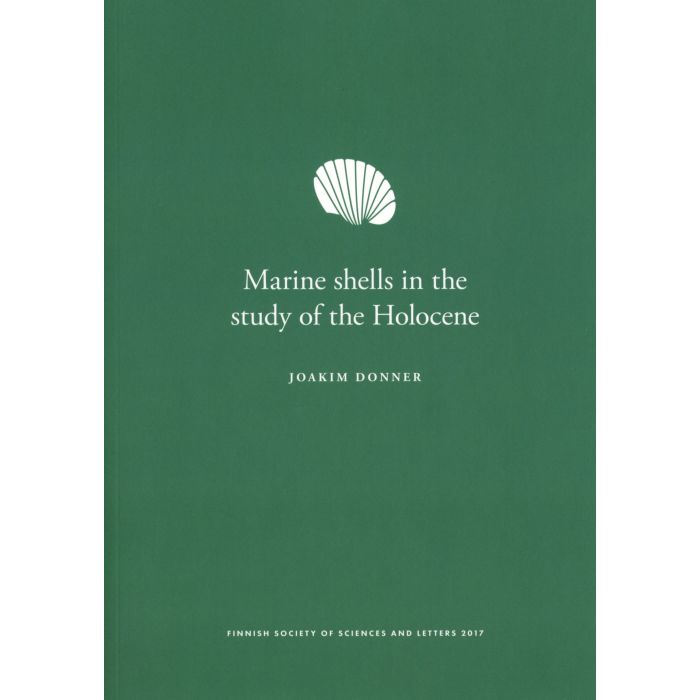We use cookies to make your experience better. To comply with the new e-Privacy directive, we need to ask for your consent to set the cookies. Learn more.
Marine shells in the study of the Holocene
Special Price
€16.00
Regular Price
€20.00
In stock
SKU
978-951-653-417-9
Donner, Joakim
Marine shells in the study of the Holocene
Finska Vetenskaps-Societeten - Suomen Tiedeseura
Bidrag till kännedom av Finlands natur och folk 202
Vaasa 2017, 55 pp.
Marine shells in the study of the Holocene
Finska Vetenskaps-Societeten - Suomen Tiedeseura
Bidrag till kännedom av Finlands natur och folk 202
Vaasa 2017, 55 pp.
After the ice sheet that covered northern Europe had melted there was an uplift of
earth’s crust. At the emerging coasts
marine shells were deposited in beach sediments. By
using radiocarbon ages of the shells the relative uplift
during the last 10 000 years could be reconstructed.
In Greenland the coastal areas similarly emerged
as in Scandinavia, and the marine shells could also
there be used in dating the relative uplift.
In Australia, on the other hand, the rise of the ocean level, as a result of the melting of the global ice sheets, marine shells could be used in dating the submergence of the coastal areas.
The analyses of oxygen stable isotopes in recent Mytilidae shells from a number of localities was shown to reflect the annual average temperatures of their coastal waters. An example of how marine shells can be used in the study of polluted coastal waters is also given.
In Australia, on the other hand, the rise of the ocean level, as a result of the melting of the global ice sheets, marine shells could be used in dating the submergence of the coastal areas.
The analyses of oxygen stable isotopes in recent Mytilidae shells from a number of localities was shown to reflect the annual average temperatures of their coastal waters. An example of how marine shells can be used in the study of polluted coastal waters is also given.
| Publisher | Finnish Society of Sciences and Letters |
|---|---|
| ISBN | 978-951-653-417-9 |
| ISSN | 0067-8481 |
| Series | Bidrag till kännedom av Finlands natur och folk |
| Sarjanro | 202 |
| Published (year) | 2017 |
| Cover | Softcover |
| Type of Binding | Softcover binding |
| Languages | english |
| Disciplines | Zoology, Nature, Environmental Studies |


